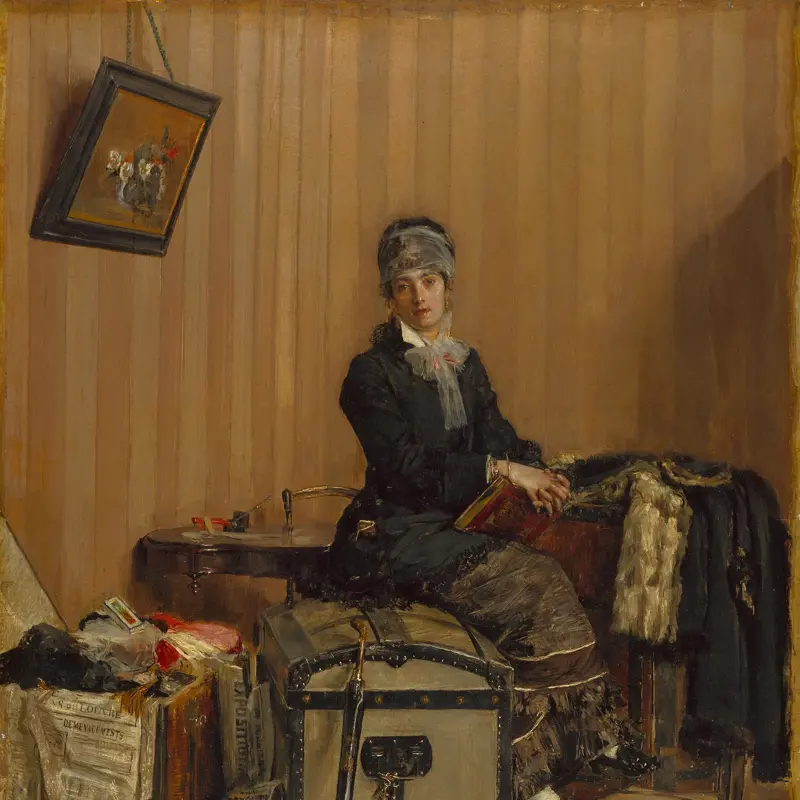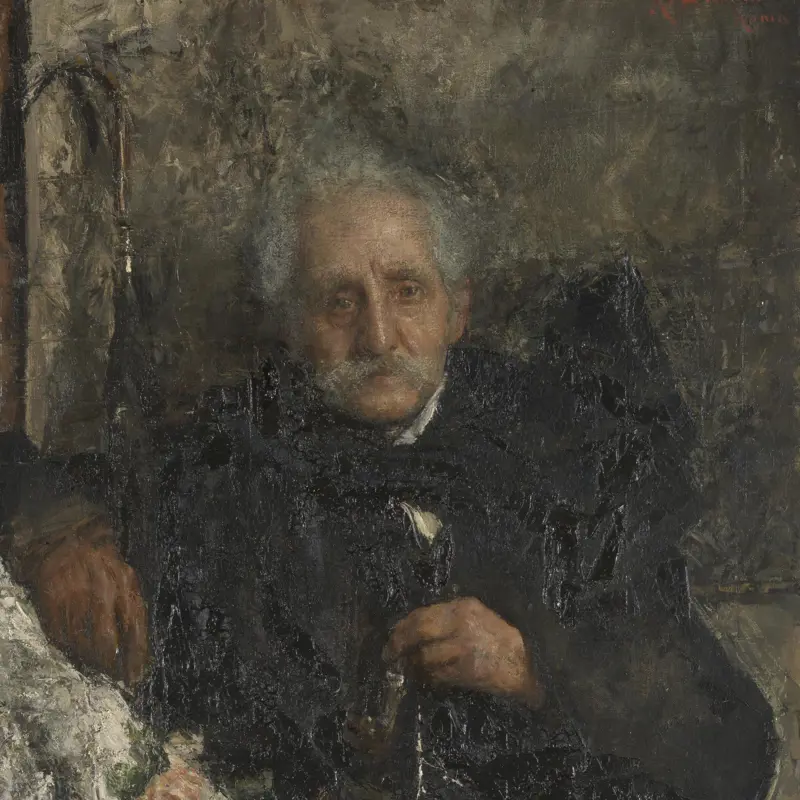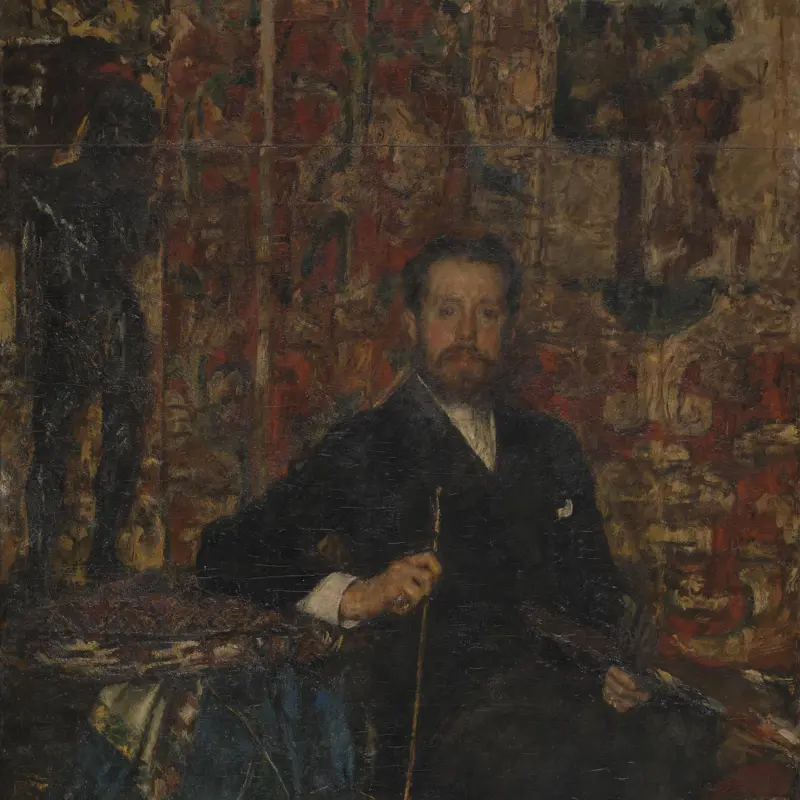Antonio Mancini, 'Aurelia', about 1906
About the work
Overview
Aurelia Ciommi was a favourite model for Mancini in Rome, posing for some 25 paintings. Her nickname was La Cornacchia (The Crow), expressive of her sharp and animated features. Here, she seems to reveal for our delectation an austere and elegant Renaissance portrait bust of a woman in white marble in which she takes evident delight. Mancini’s studio was full of such props. While the features of model and bust are relatively thinly painted, the surface of the canvas, teeming with flowers, is richly painted in thick globs of pigment. Contemporary collectors found such abstract paint handling to be thrillingly modern. Another portrait of ‘the Crow’ has been left unfinished on the reverse of the canvas; there, tearing at her blouse, she seems to be having a fit of intense emotion worthy of a tragic actress. It is not clear why that painting was abandoned.
Key facts
Details
- Full title
- Aurelia
- Artist
- Antonio Mancini
- Artist dates
- 1852 - 1930
- Date made
- about 1906
- Medium and support
- oil on canvas
- Dimensions
- 94 × 59.7 cm
- Inscription summary
- Signed
- Acquisition credit
- Sir Hugh Lane Bequest, 1917, The National Gallery, London. In partnership with Hugh Lane Gallery, Dublin.
- Inventory number
- NG3258
- Location
- On loan: Long Loan to The Hugh Lane (2019 - 2031), Dublin City Gallery The Hugh Lane, Dublin, Ireland
- Collection
- Main Collection
Provenance
Additional information
Text extracted from the catalogue entry in Christopher Baker and Tom Henry, ‘The National Gallery: Complete Illustrated Catalogue’, London 2001; for further information, see the full catalogue entry.
Exhibition history
-
2006Long Loan to The Hugh Lane (2006 - 2019)Dublin City Gallery The Hugh Lane31 December 2006 - 18 April 2021
-
2021Long Loan to The Hugh Lane (2019 - 2031)Dublin City Gallery The Hugh Lane24 February 2021 - 23 February 2031
Bibliography
-
2001
C. Baker and T. Henry, The National Gallery: Complete Illustrated Catalogue, London 2001
About this record
If you know more about this work or have spotted an error, please contact us. Please note that exhibition histories are listed from 2009 onwards. Bibliographies may not be complete; more comprehensive information is available in the National Gallery Library.



